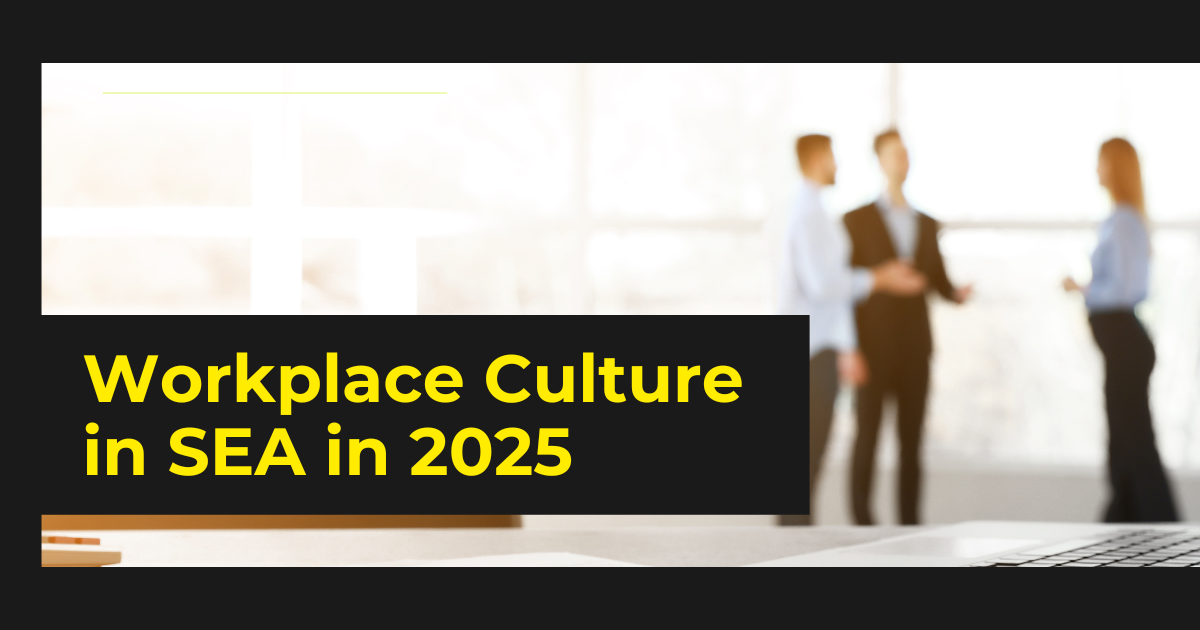
Workplace Culture in SEA in 2025: Key Trends and Initiatives for HR and Employers
The workplace landscape in Southeast Asia (SEA) is evolving rapidly, with shifting employee expectations and global influences reshaping the way organizations operate. As we enter 2025, understanding and adapting to these changes is crucial for employers seeking to build a thriving workplace culture. This article highlights four key areas HR professionals and employers should focus on to ensure a supportive, engaging, and future-ready environment.
1. Connecting with Employees to Enhance Well-being and Experience
In an era where employee well-being is directly linked to productivity and retention, organizations must prioritize building meaningful connections with their workforce.
How to Start:
- Conduct Regular Feedback Sessions: Use pulse surveys or one-on-one meetings to gauge employee sentiments and identify areas for improvement.
- Appoint Workplace Champions: Assign employee representatives to advocate for the workforce, ensuring their voices reach management.
- Invest in Well-being Programs: Introduce initiatives such as mental health resources, flexible working options, and wellness activities to demonstrate care and support.
- Host Open Forums and Town Halls: Encourage candid conversations between leadership and employees. Hearing directly from staff humanizes management and builds trust.
When employees feel heard and valued, they are more engaged and committed, creating a win-win situation for all.
2. Embracing Hybrid Work Culture
Hybrid work arrangements have become a staple of SEA workplace culture, offering flexibility that enhances job satisfaction and reduces burnout. However, a growing number of employers are enforcing a “return-to-office” mandate, citing concerns about collaboration and productivity.
Recommendations for Employers
- Adopt a Flexible Approach
Allow employees to choose their work arrangement while setting clear expectations for performance and availability. - Enhance On-Site Benefits
To incentivize office attendance, employers can offer perks such as free meals, upgraded workspaces, or on-site childcare. - Measure Productivity, Not Presence
Shift focus from hours logged in the office to outcomes achieved, fostering trust and accountability.
Benefits of Hybrid Work
- Employee Satisfaction: Studies show that 70% of SEA employees prefer hybrid models over full-time office work.
- Reduced Stress: Flexible schedules allow employees to manage personal and professional lives more effectively.
- Cost Savings: Employees save on commuting expenses, and companies can reduce office space requirements.
By striking a balance, employers can ensure a harmonious workplace that benefits both the organization and its people.
3. Prioritizing Upskilling and Reskilling for Continuous Growth
With the rapid pace of technological advancements, the demand for upskilling and reskilling has surged. Many employees believe that continuous learning is essential for career growth, and are willing to learn new skills if given the opportunity. Hence, employers should start to prioritize continuous learning to retain top talent.
Creating a Learning Culture
- Offer Subsidized or Free Courses
Using educational platforms like Coursera to provide learning opportunities. - Encourage Cross-Department Training
Allow employees to explore roles outside their current functions, fostering versatility and innovation. - Set Clear Growth Pathways
Define career progression plans that align personal development with organizational goals.
Benefits of Supporting Learning
- Talent Retention: Employees who feel their growth is supported are 60% more likely to stay with their employer.
- Innovation: A workforce equipped with up-to-date skills drives creativity and competitiveness.
Employers investing in learning not only future-proof their organizations but also inspire loyalty among their teams.
4. Bridging the Generational Gap
As Gen Z professionals take on more prominent roles in the workplace, traditional hierarchical leadership models are being challenged. This generation values collaboration, inclusion, and purpose, requiring organizations to rethink their leadership styles.
What HR and Employers Should Do:
- Promote Collaborative Leadership: Shift from a top-down approach to one where leaders and employees work as partners.
- Encourage Cross-Generational Mentorship: Facilitate mutual learning opportunities between older and younger employees.
- Foster a Culture of Respect: Implement training programs that emphasize understanding generational differences and leveraging diverse perspectives.
By embracing a more inclusive leadership style, organizations can harness the strengths of all generations, driving innovation and mutual respect.
Conclusion: Building a Resilient and Inclusive Workplace Culture
The potential workplace culture in SEA in 2025 is one of connection, flexibility, and growth. By listening to employees, supporting hybrid work, investing in continuous learning, and embracing generational diversity, employers can create an environment where everyone thrives.
As the workplace continues to evolve, organizations that prioritize adaptability and empathy will not only retain talent but also build a culture of lasting success.